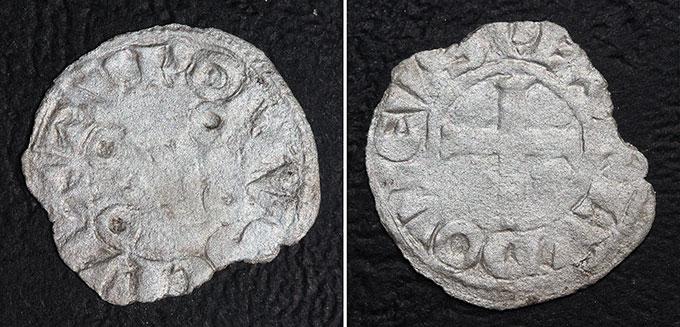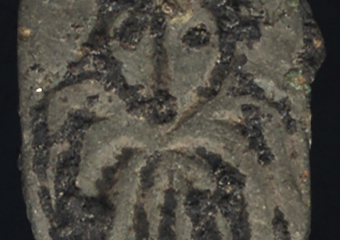More silver has been discovered in the medieval town of Rusokastro! This time - from distant France
During the exploration of a monumental fortress wall in the medieval Bulgarian town of Rusokastro, a new valuable find was discovered - a silver groat (tornese) minted in the Kingdom of France. Unfortunately, a small part of the coin is missing, but it is in this missing part that the element is present that can make it clear which ruler struck it - in this case, archaeologists are in two minds whether it was King Louis IX or King Louis X. The coin was struck in the town of Tours, hence its name.
Such coins are extremely rare in the Balkans. 
King Louis IX is canonized as a saint, and is known as Louis the Saint. He ruled the kingdom of France from 1226-1270. With a pronounced morality, this French king made a huge impression in Europe and the Middle East. In 1244, he fell seriously ill, and made a vow that if cured, he would become a crusader. He kept his vow, and until his death organized the Seventh and Eighth Crusades. During the latter, at the siege of Tunis, King Louis XIV died, perhaps of typhus. This was the first French ruler to be canonized.
King Louis X was the son of King Philip IV the Beautiful. He died young, aged only 26, in 1316. He was known by his nickname "The Whirling Head" because he often acted on his emotions, not common sense. His first wife was accused of adultery, convicted and died in the Chateau Gaillard. He subsequently married Princess Clemence of Hungary. Louis Viroglavi is famous for his charter abolishing serfdom in France, according to which any serf could ransom himself and become free. He was also responsible for the return of the Jews to France who had been expelled by his father in 1305.
The newly discovered French coin in Rusokastro raises the question of the dynamic processes of various trade operations in the Middle Ages in the eastern Balkans, in which French silver coins were apparently involved. The other explanation for the presence of this coin in Rusokastro is related to direct access of visitors or inhabitants of the town with French silver currency.
Excavations of the medieval Bulgarian town of Rusokastro.


Comments
comments powered by Disqus